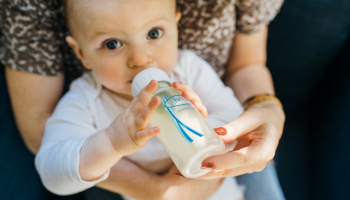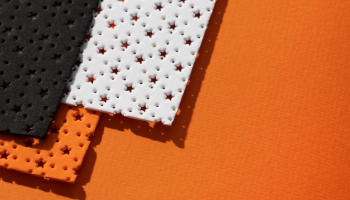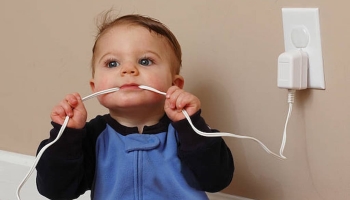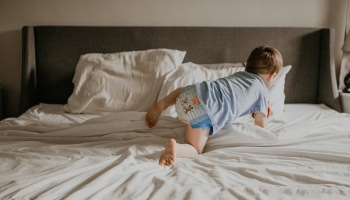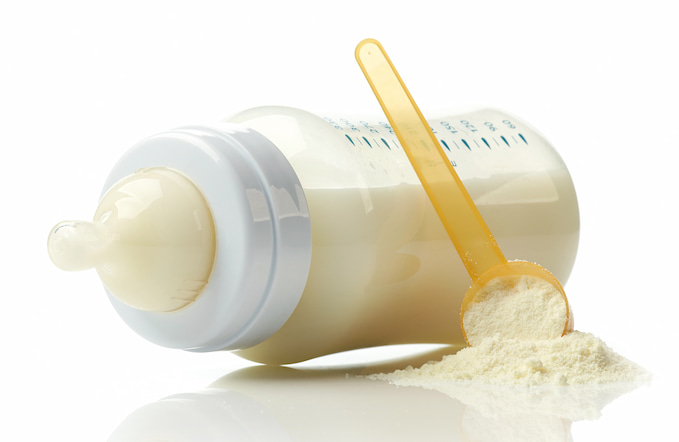
Parents and caregivers often wonder if it is safe to reheat their baby’s bottle of formula. The answer is not a simple yes or no, as there are several factors to consider. Understanding baby’s formula, feeding basics, and the risks of reheating formula can help parents make informed decisions about their baby’s nutrition.
Baby formula is a mixture of water and powdered or liquid concentrate that provides essential nutrients for a growing infant. It is important to follow the instructions on the formula container carefully to ensure the correct ratio of water to powder or liquid concentrate formula. When preparing formula, it should be used immediately or stored in the refrigerator for up to 24 hours. Reheating formula is not recommended, as it can cause bacterial growth and lead to digestive issues for the baby.
Key Takeaways
- Reheating baby formula can pose risks to the baby’s health.
- Proper temperature and storage of formula are crucial for maintaining its safety and nutritional value.
- It is important to follow the instructions on the formula container carefully and consult a healthcare professional with any questions or concerns.
Understanding Baby Formula
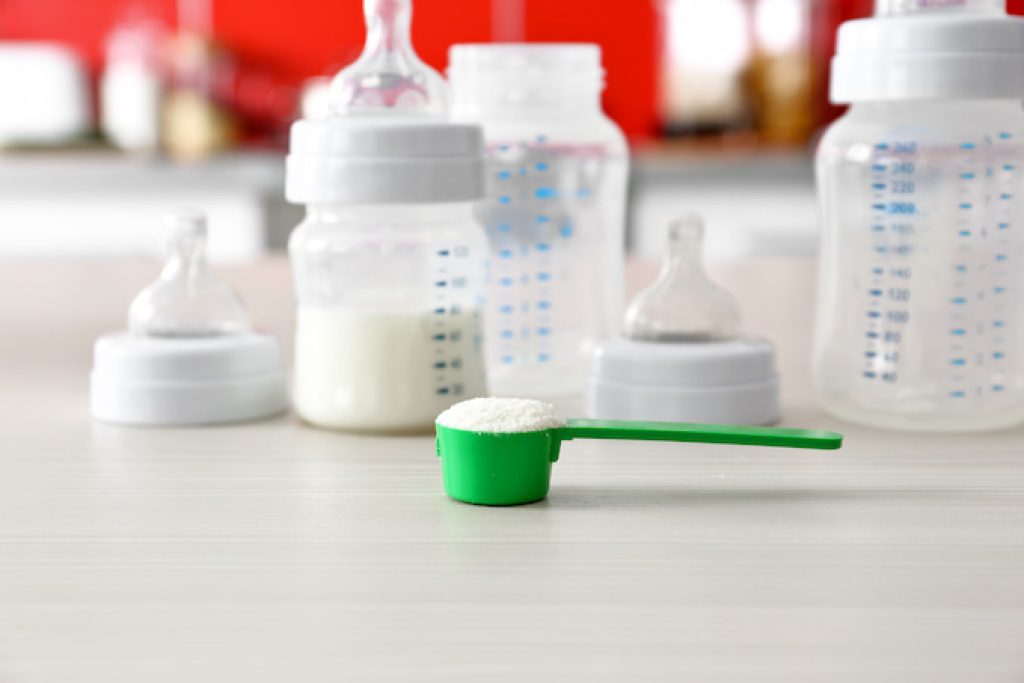
Baby formula is a type of milk that is specially formulated to meet the nutritional needs of infants who are not breastfed. It comes in different forms, including powdered infant formula preparation, and prepared formula. Powdered infant formula is usually mixed with water before feeding, while prepared formula is ready to use.
Formula provides infants with essential nutrients, including protein, fat, carbohydrates, vitamins, and minerals. The nutritional value of formula varies depending on the type and brand. Some formulas are designed for infants with specific dietary needs, such as those who are lactose intolerant or have allergies.
It is important to follow the instructions on the formula container when preparing and feeding formula to babies. This ensures that the formula is safe and provides the necessary nutrients for the baby’s growth and development.
Reheating formula is a common practice among parents, but it is important to do so safely. Formula should only be reheated once and any leftover formula should be discarded after one hour. Additionally, formula should not be reheated in a microwave as this can create hot spots that can burn the baby’s mouth. Instead, it should be heated in a container of warm water or using a bottle warmer.
Overall, understanding infant formula and its nutritional value is important for parents to ensure that their infants receive the necessary nutrients for healthy growth and development.
Feeding Basics
When it comes to feeding babies and toddlers, there are a few basics to keep in mind. Formula feeding is a common option for many parents, and it’s important to know how to properly prepare and handle formula to ensure your child’s safety.
First and foremost, it’s essential to follow the instructions on the formula container carefully. The amount of water and powder needed can vary depending on the brand and type of formula. It’s also important to pay attention to the age recommendations on the container, as different formulas are designed for different stages of development.
When preparing bottles, it’s important to use clean bottles and nipples. These should be washed with warm, soapy water and sterilized regularly. It’s also important to use clean water when mixing formula, whether it’s from the tap or from a bottle of distilled water.
Once a bottle of formula has been prepared, it should be used within a certain timeframe. Most experts recommend using prepared formula within an hour of preparation, as bacteria can grow rapidly in warm environments. If a bottle of formula has been left out for longer than an hour, it should be discarded.
Many parents wonder if formula can be reheated, and the answer is yes, but with some caveats. Reheating formula should be done carefully, as overheating can destroy important nutrients and create hot spots that can burn a baby’s mouth. To reheat formula, place the bottle in a bowl of warm water or use a bottle warmer. Avoid using a microwave, as this can heat the formula unevenly.
The Risks of Reheating Formula

Reheating formula may seem like a convenient solution for parents who want to save time and effort, but it is not without risks. When formula is reheated, harmful bacteria can grow rapidly, which can pose a serious health risk to infants.
Bacteria thrive in warm, moist environments, and formula that has been warmed and then cooled is an ideal breeding ground for them. Even small amounts of bacteria in baby drinks can cause illness in infants, whose immune systems are not yet fully developed.
One of the biggest risks of reheating formula is the potential for hot spots. When formula is heated unevenly, some areas may become much hotter than others, creating pockets of scalding liquid that can burn a baby’s mouth or throat.
To minimize the risks of bacterial growth and hot spots, it is important to follow proper guidelines for storing and preparing formula. Formula should always be stored in a clean, airtight container in the refrigerator, and any unused formula should be discarded after 24 hours. When warming formula, it should be heated to the appropriate temperature and stirred thoroughly to ensure even heating.
Proper Temperature for Formula
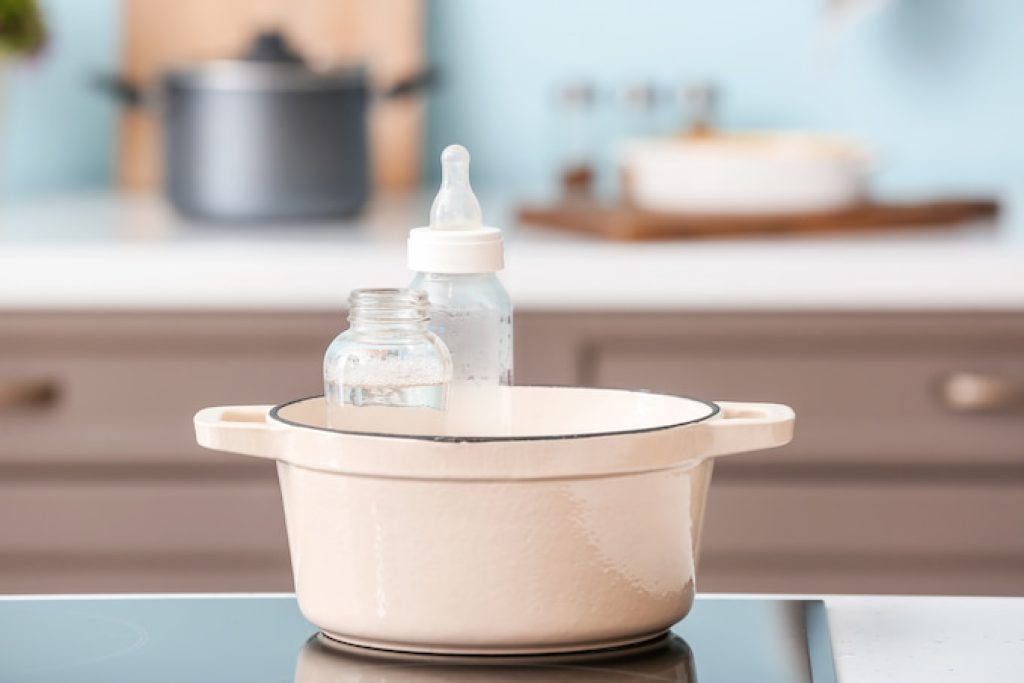
When it comes to feeding babies, it is important to ensure that the formula is at the right temperature. Formula that is too hot can cause burns to the baby’s mouth, while cold formula can cause discomfort and may not provide the necessary nutrients. Therefore, it is important to know the proper temperature for formula.
The recommended temperature for formula is between 98°F (37°C) and 104°F (40°C). This temperature range is considered safe and comfortable for babies. Formula that is too hot can be cooled down by placing the bottle in a bowl of cold water or by running it under cold water. Formula that is too cold can be warmed up by placing the bottle in a bowl of warm water or by running it under warm water.
It is important to note that hot water should never be used to warm up formula. Hot water can cause the formula to become too hot, which can be dangerous for the baby’s saliva too. Instead, warm water should be used to gradually warm up the formula to the desired temperature.
Formula that has been heated should be used within one hour. After one hour, the warm formula should be discarded. This is because bacteria can grow rapidly in heated formula, which can cause illness in babies.
Methods to Reheat Baby Formula
When it comes to reheating baby formula, there are several methods that can be used. Here are some of the most common methods:
Bottle Warmer
A bottle warmer is a device that is specifically designed to heat up baby bottles. These devices are typically electric and can be purchased at most baby supply stores. To use a bottle warmer, simply fill the warmer with water, place the bottle in the warmer, and turn the device on. The warmer will heat up the water, which will in turn heat up the bottle. This method is convenient and easy to use, but it can take longer than some other methods.
Microwave
Some parents choose to use a microwave to heat up infant formula. To do this, simply pour the formula into a microwave-safe container and heat it up in the microwave for a few seconds. However, it is important to be careful when using this method, as microwaves can heat unevenly and may create hot spots in the formula. It is also important to note that some experts advise against using a microwave to heat up infant formula.
Stovetop
Another option is to heat up the formula on the stovetop. To do this, simply pour the formula into a pan and heat it up over low heat. This method can be more time-consuming than some other methods, but it allows for more control over the temperature of the formula.
Warm Water
Another simple method is to heat up the formula using warm water. To do this, simply fill a bowl or sink with warm water and place the bottle of formula in the water. The warm water will gradually heat up the formula. This method is convenient and easy to use, but it can take longer than some other methods.
Boiling
Some parents choose to boil water and then place the bottle of formula in the hot water to heat it up. This method can be effective, but it is important to be careful not to overheat the formula. It is also important to note that boiling can destroy some of the nutrients in the formula.
Pan of Hot Water
Another option is to heat up the formula by placing the bottle in a pan of hot water. To do this, simply fill a pan with hot water and place the bottle in the water. This method can be effective, but it can take longer than some other methods.
Overall, there are several methods that can be used to reheat baby formula. Parents should choose the method that works best for them and their baby. It is important to be careful when reheating formula and to never overheat it, as this can be dangerous for the baby.
Storing and Using Leftover Formula
When it comes to storing leftover formula, there are a few things to keep in mind to ensure the safety and quality of the formula. If the formula has been touched or prepared, it should not be stored for more than two hours at room temperature. If the formula has been refrigerated, it can be stored for up to 24 hours.
It is important to note that once the baby has started drinking from a bottle, any leftover formula should be discarded. This is because bacteria from the baby’s mouth can contaminate the formula and make it unsafe for consumption.
If there is unused, untouched formula left in the bottle, it can be stored in the refrigerator for up to 24 hours. It is important to cover the bottle with a lid or plastic wrap to prevent contamination.
If the formula needs to be stored for longer than 24 hours, it can be frozen. However, it is important to note that freezing can change the texture and consistency of the formula. It is best to freeze formula in small portions to make it easier to thaw and use.
When using leftover formula, it is important to check the temperature before feeding it to the baby. Formula that has been refrigerated or frozen should be warmed up before feeding. This can be done by placing the bottle in a bowl of warm water or using a bottle warmer. It is important to never microwave formula as it can create hot spots that can burn the baby’s mouth.
Safety Measures and Precautions
When it comes to infant feeding items and to reheating formula, safety measures and precautions must be taken to ensure the health and well-being of the baby. Here are some important points to keep in mind:
- Sterilize all baby products, including bottles and nipples, before use to eliminate any harmful bacteria.
- The best way to reheat formula is by placing the bottle in a saucepan of hot water. Avoid using a microwave as it can create hot spots and cause burns to the baby’s mouth.
- Always check the temperature of the formula before feeding the baby. Shake the bottle and test the temperature on the inside of your wrist. It should be warm, not hot.
- Consult with a pediatrician for specific instructions on reheating formula, especially if the baby has any health concerns or allergies.
- Use only bottled water or boiled tap water to prepare the formula. This will reduce the risk of contamination from harmful bacteria or chemicals.
By following these safety measures and precautions, parents can ensure that their baby receives safe and healthy formula.
Conclusion
In conclusion, while it is technically possible to reheat baby formula, it’s generally not recommended. Once a baby has started drinking from a bottle, the leftover formula should be discarded within two hours due to potential bacterial contamination from the baby’s mouth. If the baby hasn’t drunk from the bottle, untouched formula can be refrigerated and used within 24 hours.
The formula should always be warmed carefully, ensuring it doesn’t overheat or create ‘hot spots’ which could burn the baby’s mouth. Microwaving is discouraged for this reason. Instead, using a bottle warmer or placing the bottle in warm water is suggested. The reheating and storage practices ensure the baby’s safety and the quality of the formula.
Frequently Asked Questions
How long is formula good for after it’s been warmed up?
Formula should not be left at room temperature for more than an hour after it has been warmed up. After that, it should be discarded. If the formula has been refrigerated, it can be warmed up and used within 24 hours.
Can formula be refrigerated after it’s been warmed up?
Formula should not be refrigerated after it has been warmed up. Bacteria can grow in the formula if it is not used within an hour of warming.
Can you reheat a bottle of breastmilk more than once?
Breastmilk should not be reheated more than once. Reheating breastmilk can cause the already expressed breast milk to break down and lose nutrients. If the baby does not finish the bottle, do not store breast milk, the remaining breastmilk should be discarded.



